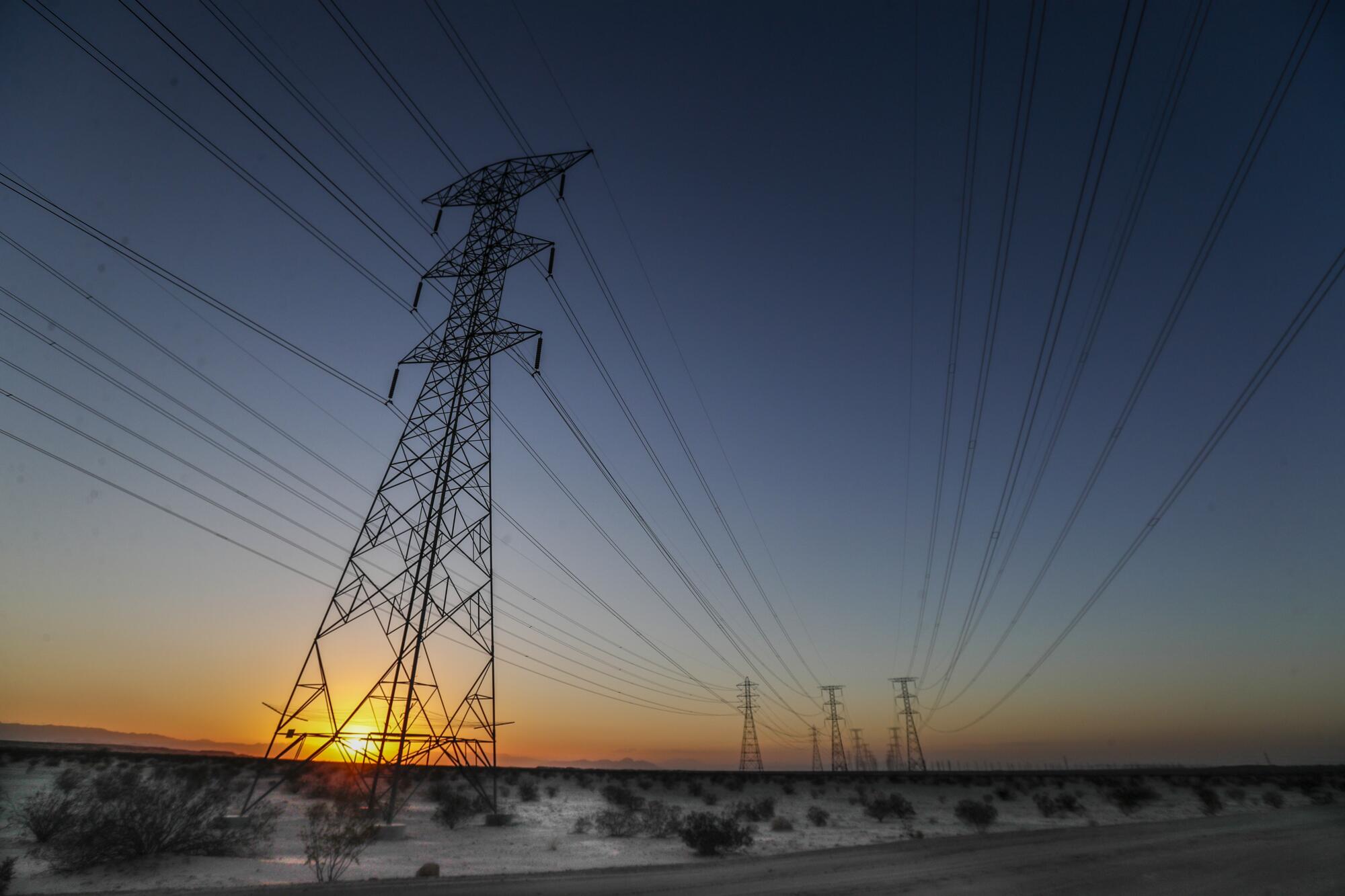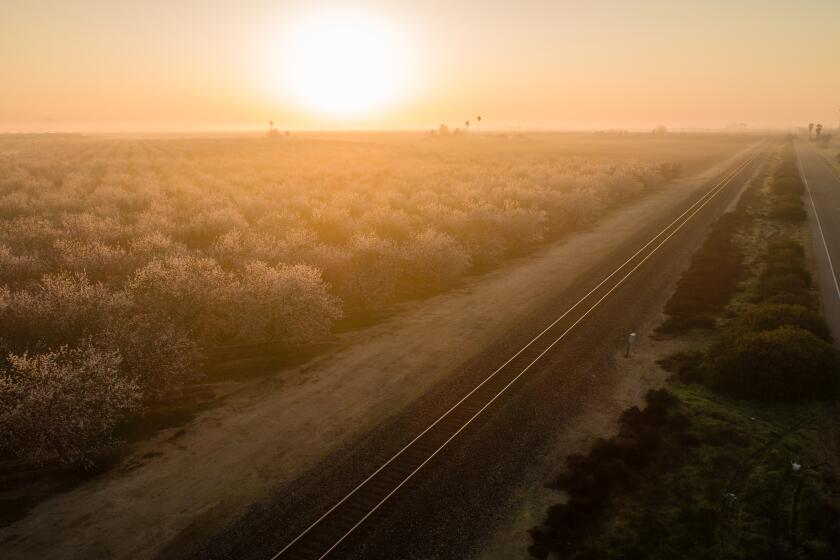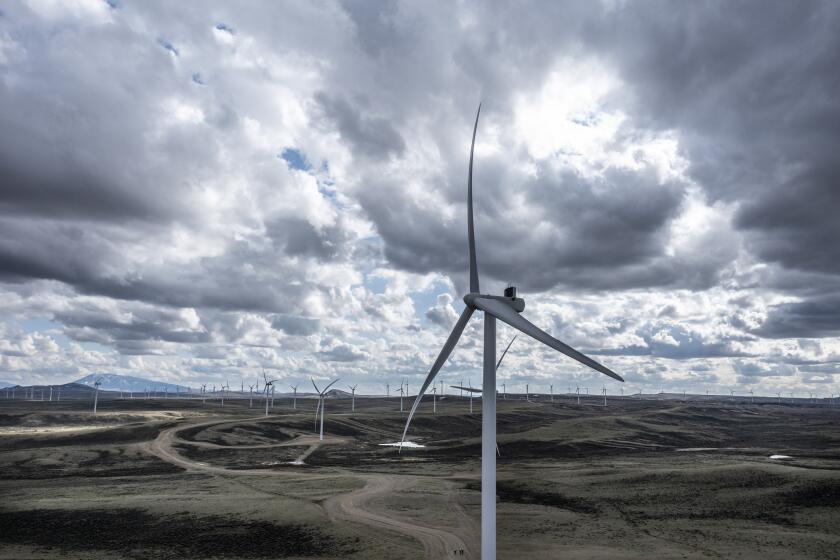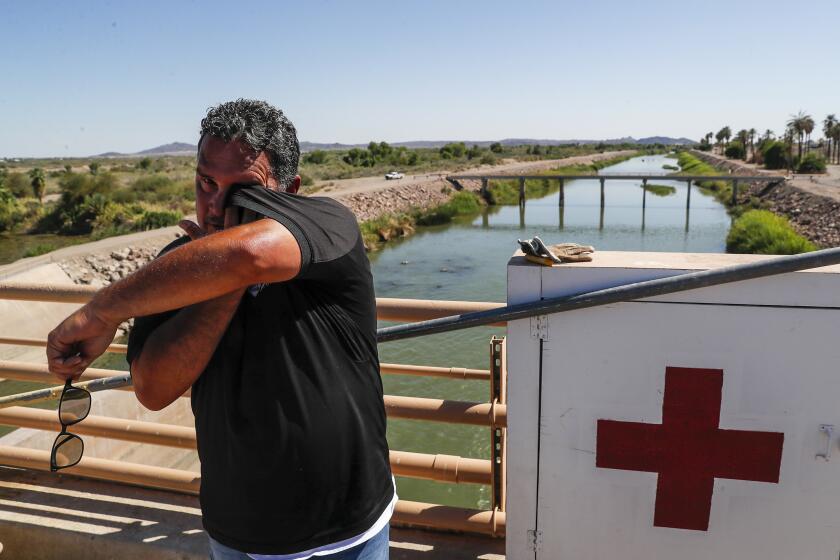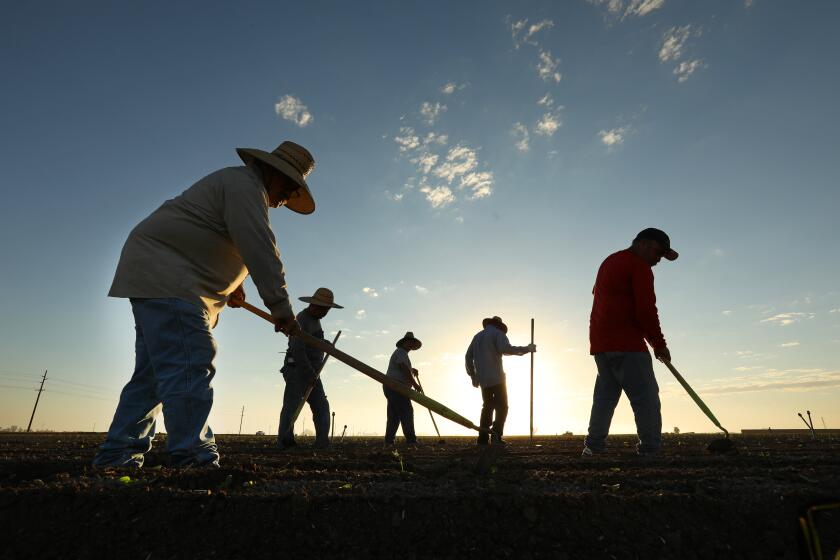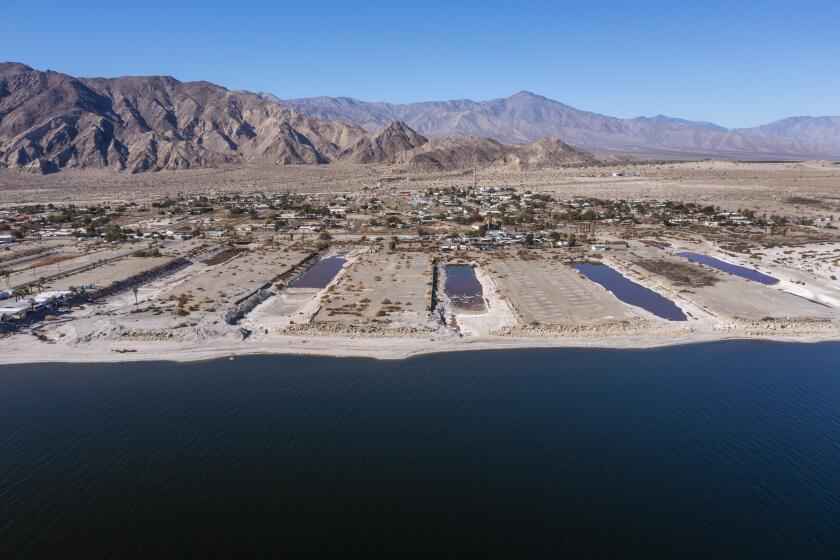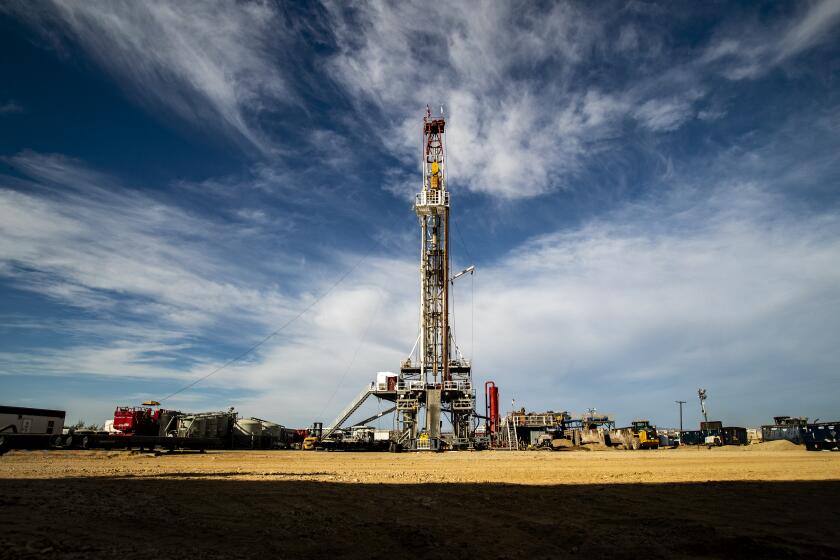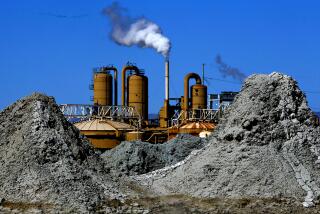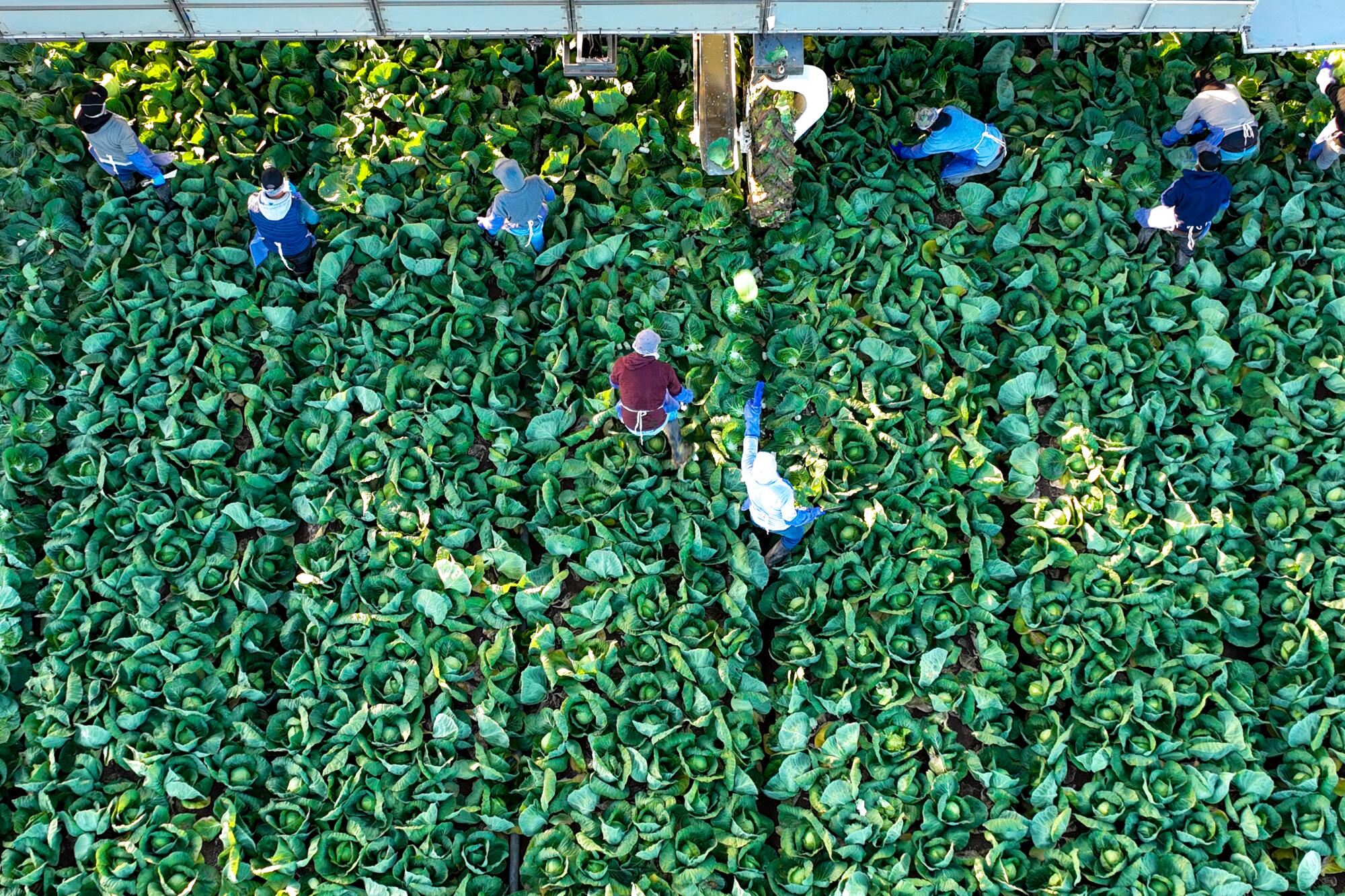
The barren dirt is littered with petrified carrots, blackened and barely recognizable after four years baking in the Imperial Valley’s legendary heat. The August sun is starting to set, but it’s still 113 degrees in California’s hottest, driest county.
Ralph Strahm tried his best to make money off this ground. In addition to carrots, the soft-spoken 66-year-old grew alfalfa and Sudan grass, using Colorado River water that originated as Rocky Mountain snowpack hundreds of miles away.
But the sandy, gravelly soil refused to cooperate. The economics were no good.
So the third-generation Imperial Valley farmer decided to sell — to a solar energy developer.
“You have to be willing to accept the future,” he says.
By year’s end, a field of solar panels should cover this land, sending clean electricity to San Diego. A giant battery will help the coastal city keep the lights on after dark. None of the infrastructure will destroy pristine wildlife habitat.

The conflict between agriculture, renewable power and water supply is playing out in the desert.
And the Colorado River water that once irrigated these 400 acres? It will remain in Lake Mead, or be sent to nearby farms or other parts of the Southwest, helping the region cope with a dangerous drying trend.
If that sounds like an outcome to which nobody could object — well, welcome to the Imperial Valley.
Wedged in California’s southeastern corner, it’s one of the most important places you’ve probably never been.
To one side of Strahm’s farm is the Sonoran Desert at its most stark, where creosote-studded washes give way to glimmering sand dunes and craggy mountain peaks.
To the other side is an astonishingly productive agricultural empire. Nearly half a million acres of lush green fields sprawl into the distance, popping out lettuce, sugar beets, onions, cattle feed and more.
If you’ve ever eaten a salad in the winter, there’s a good chance some of the veggies came from here. Not many places stay warm enough year-round for this kind of bounty.
But keeping the vegetable aisle stocked comes at a cost. Imperial County farm barons use more Colorado River water than the rest of California combined.
And as the planet heats up, there’s less and less water to go around.
The heat storm that struck California just before Labor Day offered a taste of what’s coming.
Temperatures were so high that the state nearly ran out of power as tens of millions of people cranked up their air conditioners. For 10 straight days, officials begged the public to use less electricity. Major utility companies barely avoided rolling blackouts — an increasingly common occurrence as climate change brings more extreme weather.
Strahm’s vegetable graveyard could be part of the solution.
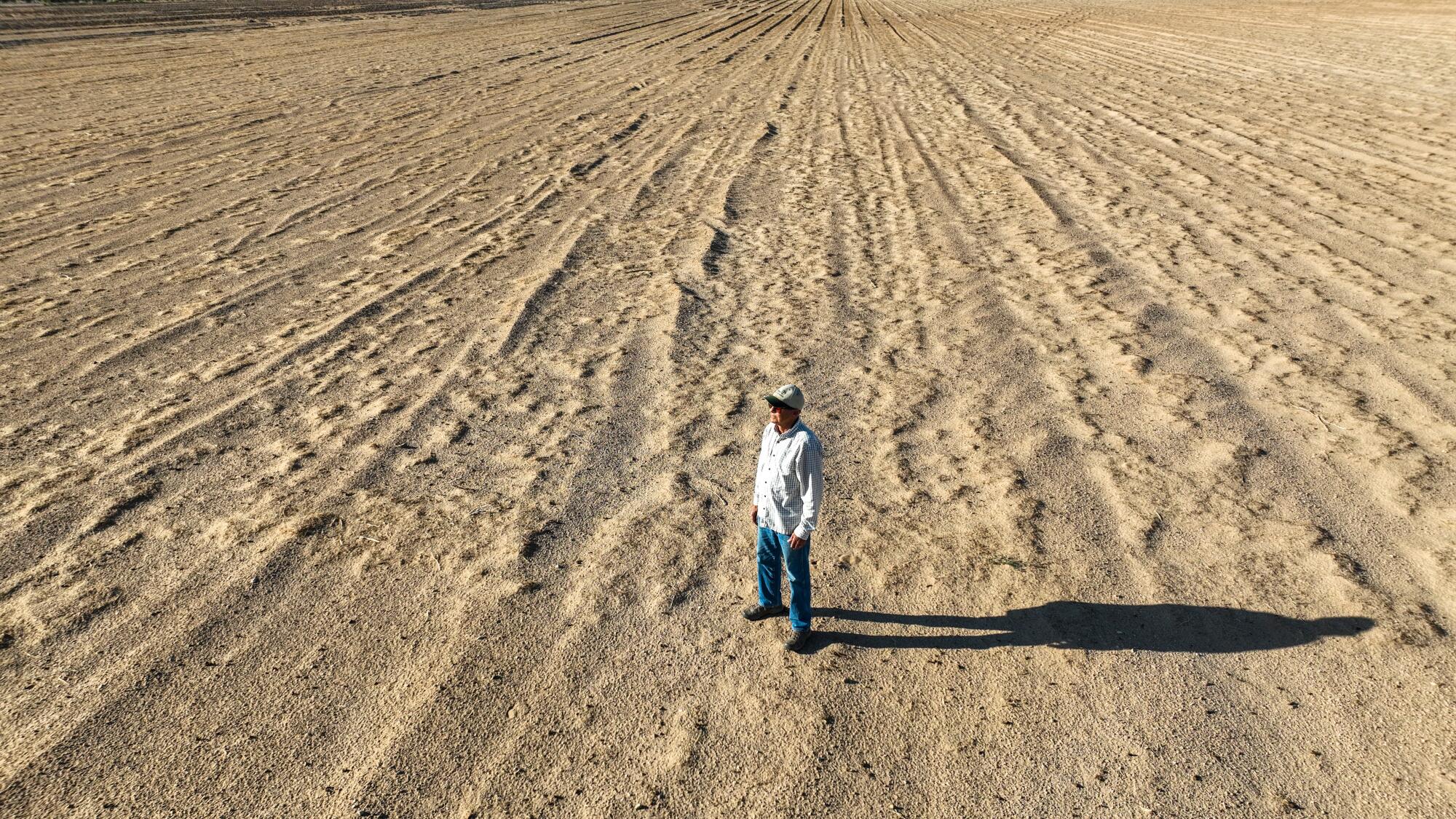
Clean energy advocates see Imperial as an ideal place for solar farms and battery projects that can help solve the American West’s energy and water crises. The land is flat; the sunlight, abundant. The Colorado River desperately needs relief. And Imperial is one of California’s poorest counties, its agriculture-heavy economy practically crying out for diversification and higher-paying jobs.
But resistance to change runs deep, particularly among the few hundred families who own all the farmland.
Agriculture is the only way of life many of them have known, and they’re raring to defend it. Their ancestors settled here a century ago, staking an early claim to the Colorado and carving canals to carry its riches through the desert. Again and again, they’ve faced pressure to sell water to coastal cities. They’re ready to pounce on anything that smells like a water grab.
And to some of them, solar power smells like a water grab.
Similar conflicts between agriculture and renewable energy are playing out across the country, especially in drought-stressed areas. As some farmers strike deals with solar and wind developers, their neighbors treat the industry like an invading force.
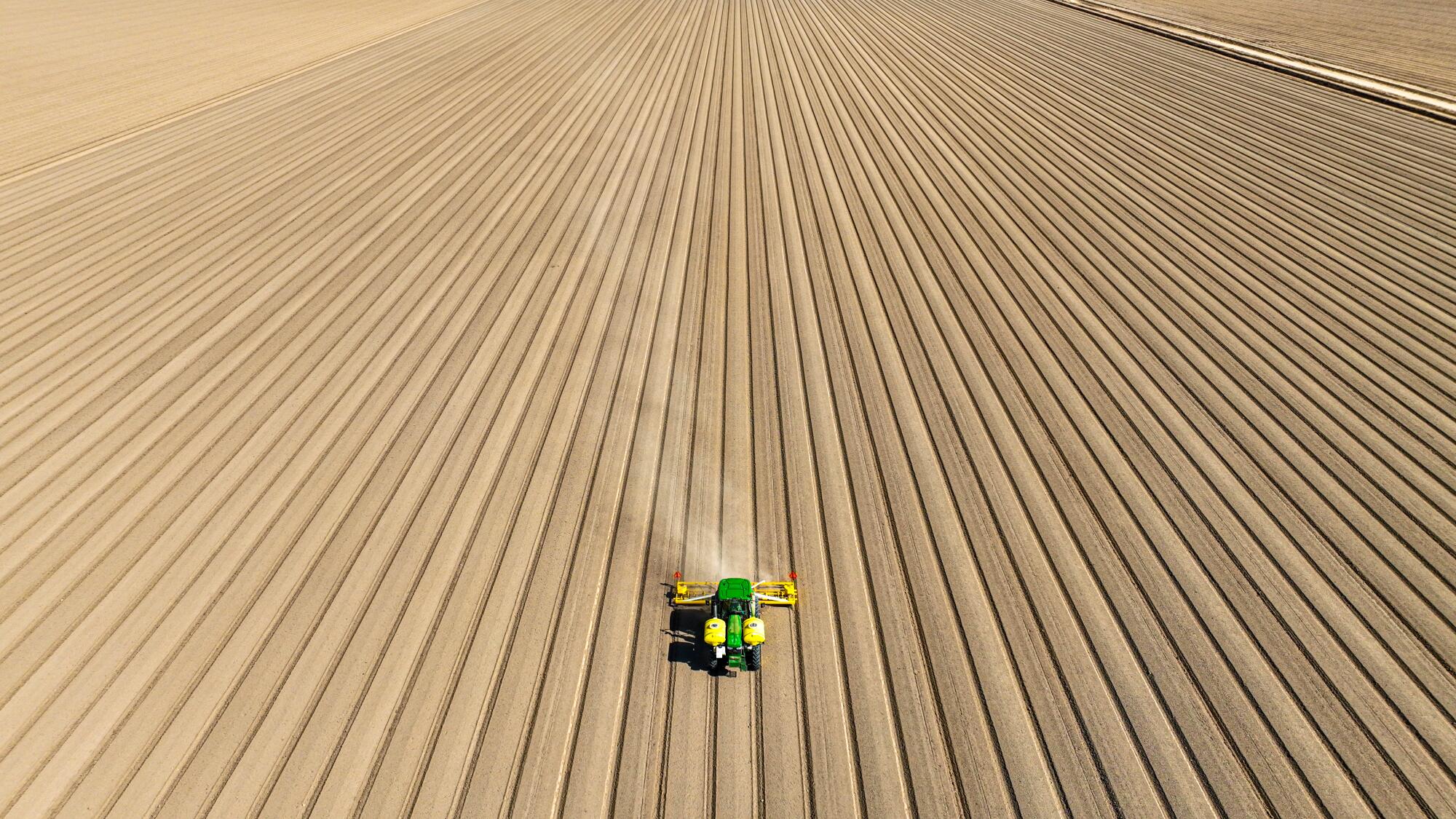
Lurking beneath these battles are urgent questions with no easy answers: What is the land’s best use? Who gets to decide? And how do we balance water conservation, food production and clean power generation in an era of climate emergency?
Los Angeles Times journalists spent the first few days of the late-summer heat wave in Imperial, returning in the fall and winter to see harvesting and planting. We visited solar farms, alfalfa fields, geothermal plants and the dying Salton Sea. We talked with landowners, workers, energy executives and elected officials. They offered wildly diverging visions of the region’s future.
One takeaway was obvious: If the world keeps getting hotter, nobody wins.

Solar is for fighting over
The irrigated expanses of Imperial’s Southend unfurl in every direction, an eerily flat landscape interrupted only by the 2,500-foot peak of Mt. Signal just south of the U.S.-Mexico border. The mountain looms like a watchtower over the farm fields — and the sweeping solar projects right alongside them.
This is where Trevor Tagg learned to despise the solar industry.
We meet up with Tagg just after sunrise on our first morning in Imperial, at his company’s office in El Centro, the county seat. He knows we’re here to tell a story about solar power. But from the moment we climb into his truck, he wants to talk water.
“There isn’t anything else. The only resource that’s here is the water, which is why we have such a target on our back,” he says.
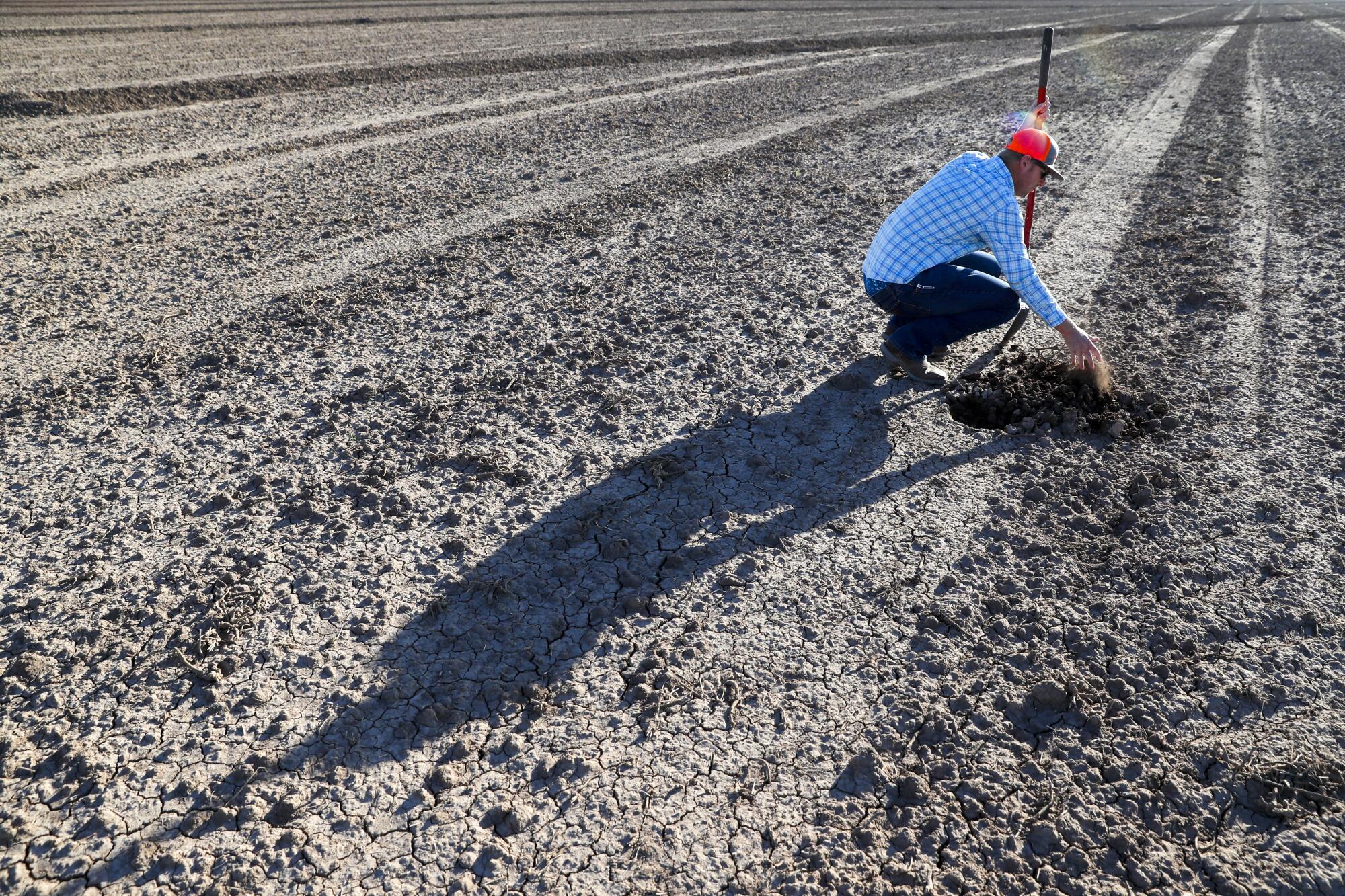
As Tagg drives south toward his farm fields — camouflage-patterned pads adorning his front seats — he describes the family business. He works with his dad and brother, running a company with about a dozen employees and 3,000 acres under production.
They grow mostly alfalfa and grasses, packing the crops into hay bales to feed livestock. The process requires colossal amounts of water. Of the 830 billion gallons that flowed through the Imperial Valley in 2021, roughly 240 billion went to alfalfa fields.
Add in Bermuda, Sudan and Klein grass, and 60% of the valley’s irrigated acreage was dedicated to crops that feed animals.
Jessica Q. Chen / Los Angeles Times
All told, Imperial Valley feed crops consume more water each year than the entire state of Utah.
But people love eating cows, chickens and other animals that grow fat on alfalfa and grasses. And it’s not just our hamburgers and chicken nuggets on the line. Milk, cheese, butter and ice cream are all made possible, in part, by Colorado River water.
“If alfalfa goes away, then large swaths of the dairy industry go away,” Tagg says.
Actually, at least some production would probably shift to rainier parts of the country, climate experts say. But local farmers warn that food prices could rise.
Your guide to our clean energy future
Get our Boiling Point newsletter for the latest on the power sector, water wars and more — and what they mean for California.
You may occasionally receive promotional content from the Los Angeles Times.
As Tagg drives toward the border, we pass a solar farm on land owned by relatives on his mother’s side of the family. He’s got practical reasons for wishing it had never been built, including loss of agricultural jobs, lower tax revenues and questions about who will clean up all those photovoltaic panels a few decades down the line. But his resentment also is deeply personal.
“I was farming that ranch. It’s where I invented this whole retail business that I’ve been running,” he says.
“It’s none of my business,” he adds, his voice bitter. “It’s just, I’m related to my mom.”
Other growers have learned to love solar.
Eddie Wiest hails from a settler family that moved to Imperial just after 1900 and began cultivating cotton, dates, asparagus and more. That history hasn’t stopped him from striking several land deals with Avantus, one of the biggest solar developers in town.
The economics of solar, Wiest says, are only a little better than farming, at least in his case. But Colorado River water supplies are more uncertain than ever, and some of Wiest’s soil isn’t the highest quality. Diversification appeals to him.
“Times change,” he says. “A lot of people resist change.”
It may be easier for Wiest to accept that fundamental truth because he no longer lives in Imperial. He recently moved to Texas, following his daughter and grandkids.
But many locals have seen the same economic logic. Already, Imperial produces more solar energy than all but two of California’s 58 counties. Landownership records for the 17,500 acres that have been converted to solar — less than 4% of the valley’s irrigated acreage — include plenty of names belonging to prominent local families.
About a mile from the border, Tagg pulls up to a 280-acre patch of ground where he grows Bermuda grass. He ruefully calls this place “the island.” It’s surrounded by solar on all sides — an oasis of green swimming in a sea of black solar-panel waves.
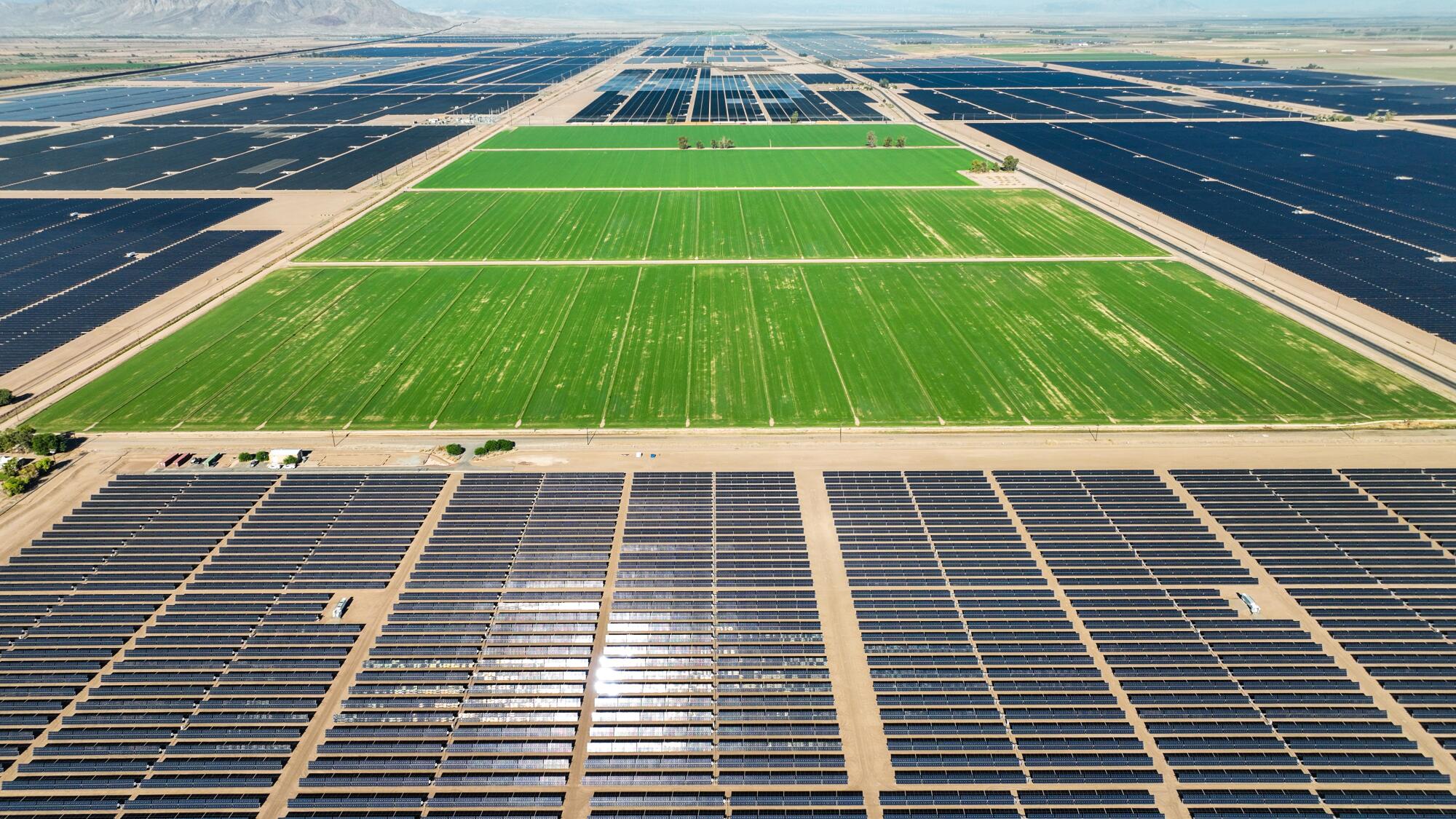
A few blocks farther south, Colorado River water flows through the All-American Canal, whose concrete channel snakes along the U.S.-Mexico border wall. It’s just before 9 a.m. and nearing 100 degrees.
On a morning like this one, it’s painfully clear why more solar is needed to confront the climate crisis — and fast. This kind of brutal heat is increasingly common, and increasingly deadly. The water running through the canal is increasingly scarce, and increasingly coveted by the West’s great cities. The only way to stop the downward climate spiral is to burn less coal, oil and natural gas.
Let’s use this Thanksgiving as an opportunity for optimism on climate change.
Tagg refuses to accept the science of global warming. But he knows the Colorado is in crisis. And he knows he and other farmers have a crucial role to play in saving Lake Mead, because agriculture is the biggest draw on the reservoir.
“We understand that we have our responsibilities,” he says.
Other growers feel the same responsibility. But they harbor a profound mistrust for distant cities that keep adding people even as water supplies decline. Especially when those population centers look to farm country for water to fuel their growth.
“They’re building their commerce on the backs of ours,” Tagg says. “Why are we being called selfish for wanting the same thing?”
Jackeline Luna / Los Angeles Times
The city officials angling for more of Imperial’s precious water would never dare call Tagg and his compatriots selfish — at least not to their faces. But they might point out that across the Colorado River Basin, farms use 80% of the water used by humans. Almost half of that farm water goes to alfalfa. And some of the alfalfa is shipped overseas.
Growers in Imperial and other Western farm belts say they have good reason to stick with the water-intensive feed crop. Alfalfa promotes healthy soil. It can survive dry times without its full water allotment. And alfalfa prices have soared to record highs the last few years. Even during a drought, Westerners want their beef, dairy and poultry.
The availability of those foods shouldn’t change much if Tagg is forced to cut back. For all his talk of feeding the nation, he specializes in making hay to feed horses — including racehorses you might see at Santa Anita Park.

The politics of power
It’s another blazing hot morning as trucks loaded with equipment rumble over a short bridge, crossing a blue-green canal that separates sandy brown desert from verdant farm fields. They’re carrying supplies to a lithium-ion battery storage project that will help California avoid rolling blackouts on days when there’s not enough electricity. Days like today.
Looking across the construction site, Imperial County Supervisor Ray Castillo sees progress.
“Out of 58 counties in California, we’re considered the poorest, with the highest unemployment rate and the lowest median income,” he says. “Bringing in manufacturing, bringing diversification, is going to bring those salaries up.”
It sounds like a noble sentiment. But it’s landed Castillo in a fight for his political life.
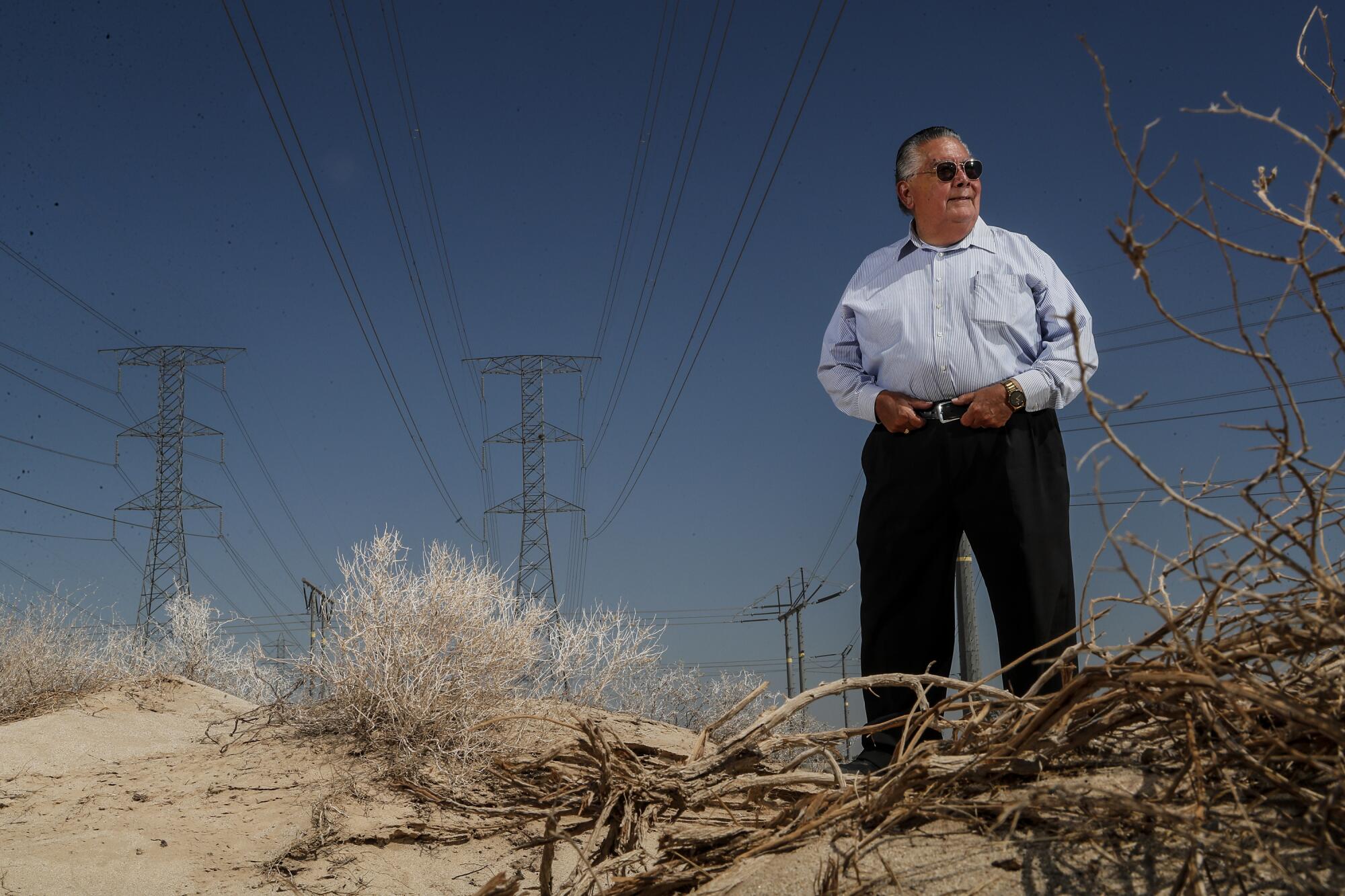
His challenger in the November election, a farmer named John Hawk, has hammered him for supporting an industry that critics say does little for the valley. They see Castillo as the solar industry’s enabler, using his vote on the Board of Supervisors to approve solar projects that take farmland out of production and replace steady agricultural work with temporary construction jobs.
It’s a reminder that climate solutions — no matter how badly they’re needed, or even welcomed in theory — can create winners and losers.
In Imperial County, population 180,000, the winners include hundreds of union workers building the battery installation along Westside Main Canal.
The facility is being developed by Consolidated Edison of New York, and it’s relatively noncontroversial. Like the solar project at Strahm’s carrot graveyard, it’s replacing fringe farm ground that hasn’t been cultivated in years. It will connect to San Diego via two long-distance power lines and help the coastal region keep the lights on after dark, when solar panels stop generating.
Billionaire Phil Anschutz — who owns the Coachella music festival, the Los Angeles Kings hockey team and L.A.’s Crypto.com Arena — is preparing to build the nation’s largest wind farm. We traveled the route.
Other Imperial Valley solar and storage projects supply Los Angeles County and the Bay Area. But none of the batteries are as big as this one, which could grow to 2,000 megawatts. That’s nearly the size of the Diablo Canyon nuclear plant.
“Everything that we grow, we ship out of county. Everything,” Castillo says, as if anticipating the criticism. “We’re doing the same thing here with solar. We’re generating solar, and we’re shipping it out of the valley.”
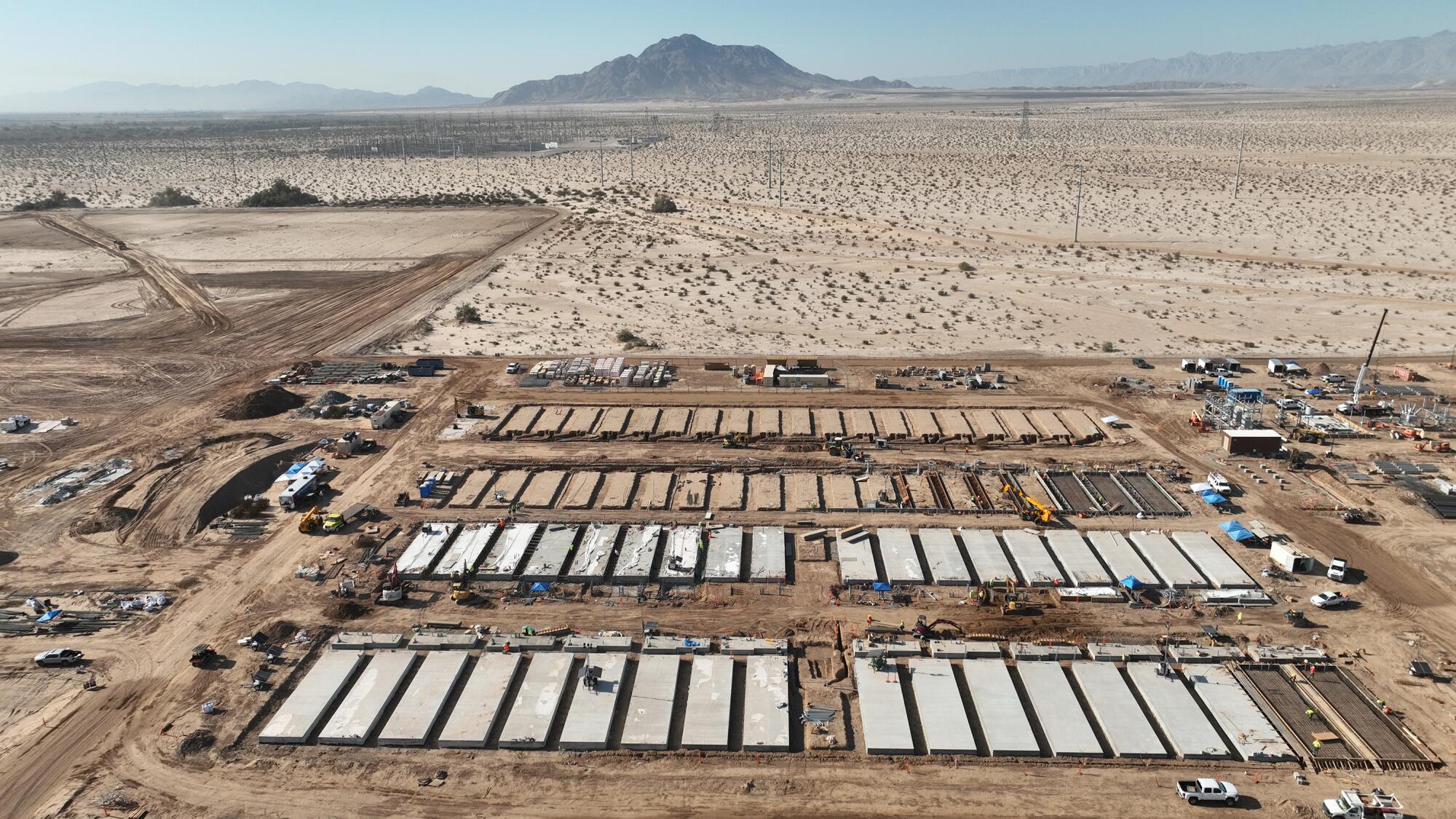
The county supervisors are charged with approving or rejecting solar projects on private property. Over the last decade, they’ve signed off on nearly 24,000 acres of solar, mostly on agricultural land.
“I really think that we did the right thing,” Castillo says. “Looking at the drought now, I’m even more convinced that we did the right thing. Arizona’s getting cut 21% of their water use. Can you imagine if they cut 20% of this county’s water?”
Supporters see Castillo’s argument as eminently reasonable. His opponents are eager to tear it apart.
Castillo’s challenger Hawk farms 3,000 acres in and around Holtville, the self-described Carrot Capital of the World. His office walls are decorated with dead animals, most of which he killed himself — including a rattlesnake.
His biggest problem with the solar industry, he says, is it’s killing agricultural jobs. That harms field laborers and others who work at businesses that support crop production, including irrigation firms, tractor suppliers, tire shops and fertilizer sprayers.
Hawk is also frustrated that solar farms don’t pay property taxes — an exemption recently extended by state lawmakers.
“It doesn’t help our economy at all,” he says. “They use our resources, our roads, our power — and then they’re gone.”

It’s an argument likely to resonate with at least some farmworkers.
As the early-morning sun casts golden light on a lettuce field outside Holtville, a crew of 18 thins out the seedlings, using hoes to remove two out of every four tiny plants and make sure there’s enough space for each to grow. It’s careful, exacting work — and the foreman, Jose Valadez, worries there will be less of it as more solar projects get built.
“For some people it’s OK, but not for us. Because they’re taking away our acres,” he says.
Mireya Martinez, who’s part of a crew harvesting cauliflower outside El Centro, has similar concerns about what solar will mean for her. But she understands the industry’s appeal. She knows people who have gone from picking crops to building solar projects — and she’s considered making the jump herself.
“They pay more,” she says in Spanish.
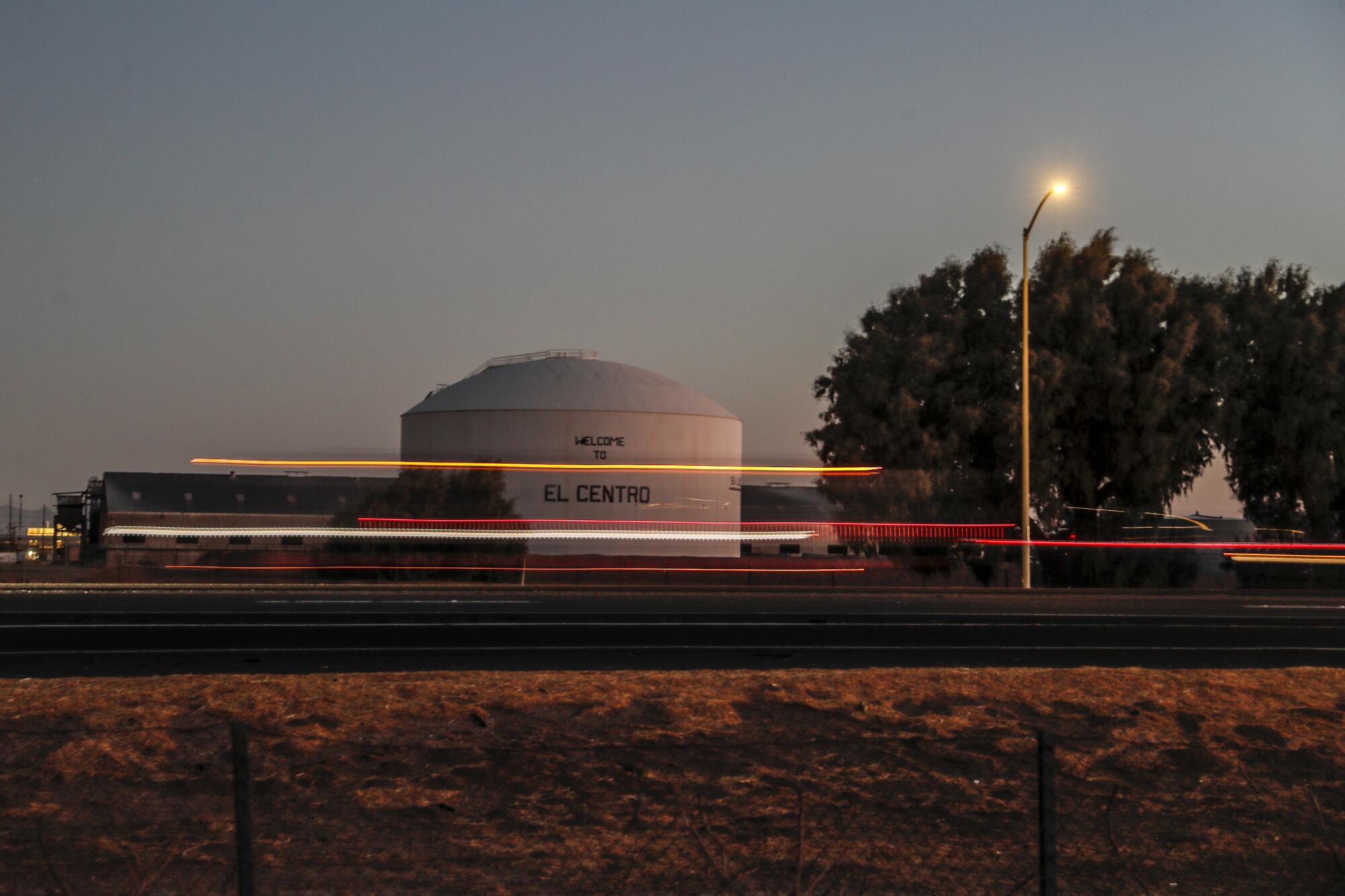
Most farmworkers aren’t focused on the threat posed by solar, according to Xochitl Ludwig, who got her start packing spinach and other crops and is now a safety supervisor for Martinez’s employer, the labor contractor Nature Joy Harvest. But just because other challenges feel more pressing doesn’t make the solar threat any less real, she says.
“A lot of people will be unemployed,” she says.
Castillo says he understands those concerns. But he notes that voluntary agreements with solar developers have yielded more than $30 million for county coffers over the last decade — money that officials have used to help reopen a beef processing plant, bringing back hundreds of jobs, and to support dozens of other causes. Although solar companies don’t pay property taxes, they have paid close to $80 million overall in other taxes and fees, county officials estimate.
We stop at the construction site of a nearly finished solar farm being built by New York hedge fund D.E. Shaw, to supply power to Sacramento. Castillo chats up an engineer, asking if she lives in Imperial.
No such luck. She’s from San Diego.
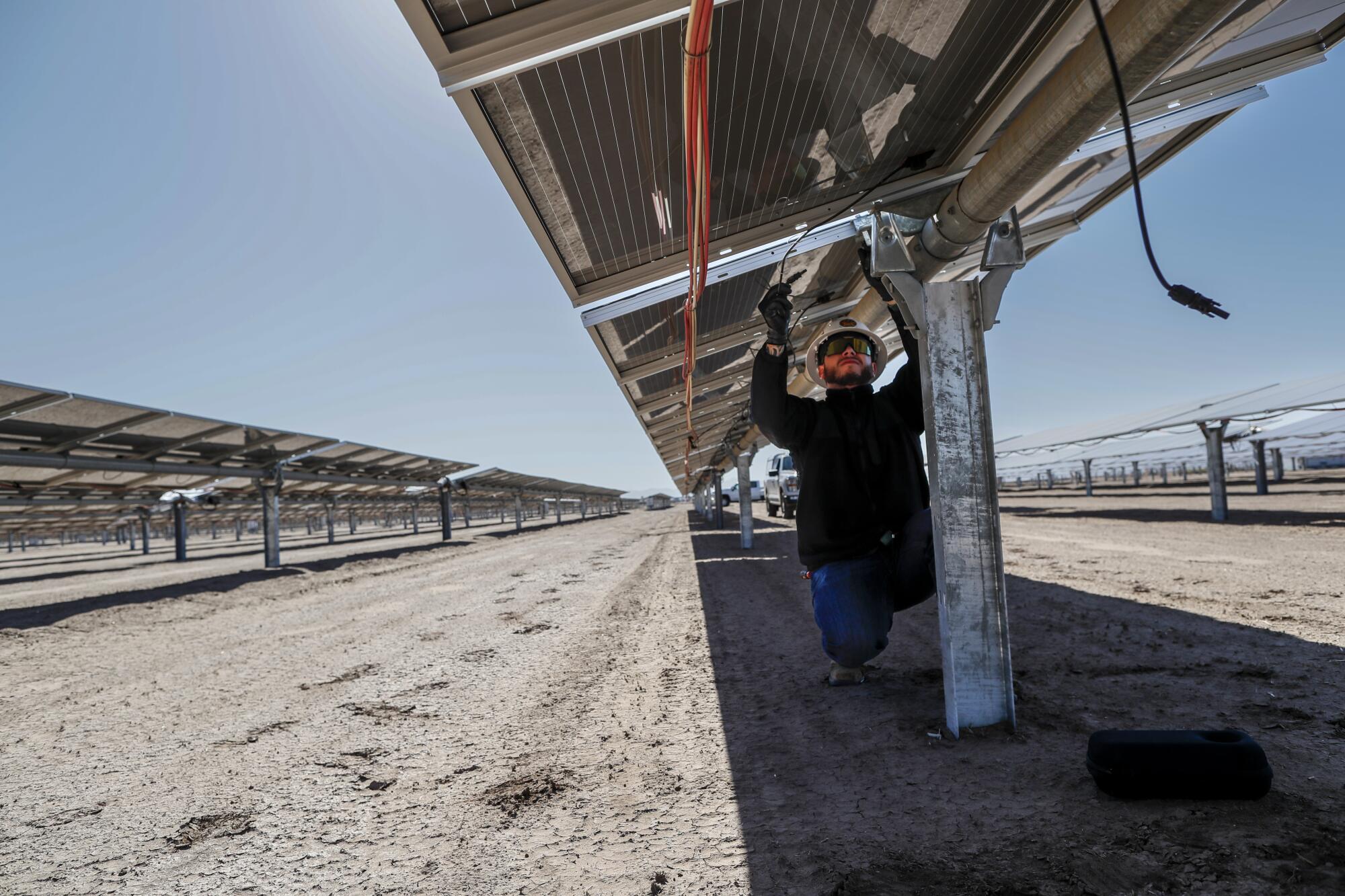
But she’s staying in El Centro and spending money locally. And some of her co-workers do live here, although it’s hard to know exactly how many. The pay is good, and union members get extensive training that can serve them across industries.
“Our community has really benefited from it tremendously,” Castillo says.
Slowing the rise of global temperatures would also benefit the community tremendously. Imperial is already frighteningly hot, and getting hotter. Losing power during a heat wave can be deadly. So can picking crops beneath the summer sun.
When Castillo was a kid in the 1950s, he says, Imperial “was hot, but nothing like this.”
“The nights would cool down to maybe in the 70s, whereas now it’s in the 80s,” he says. “Plus the summers are longer.”
If voters share Castillo’s concerns about the climate crisis, they don’t show it on election day. Hawk wins a resounding victory.
The Imperial Valley is on the front lines of the climate crisis. It also has solutions.

Bridging the trust gap
You wouldn’t know there’s a drought from visiting Imperial Dam. There’s no bathtub ring like at Lake Mead, screaming at you about the dire state of Western water supplies. There are no long-lost canyons emerging as those supplies dry up, like at Lake Powell.
But this is where the magic happens. This is where Imperial Valley farmers reroute the mighty Colorado River.
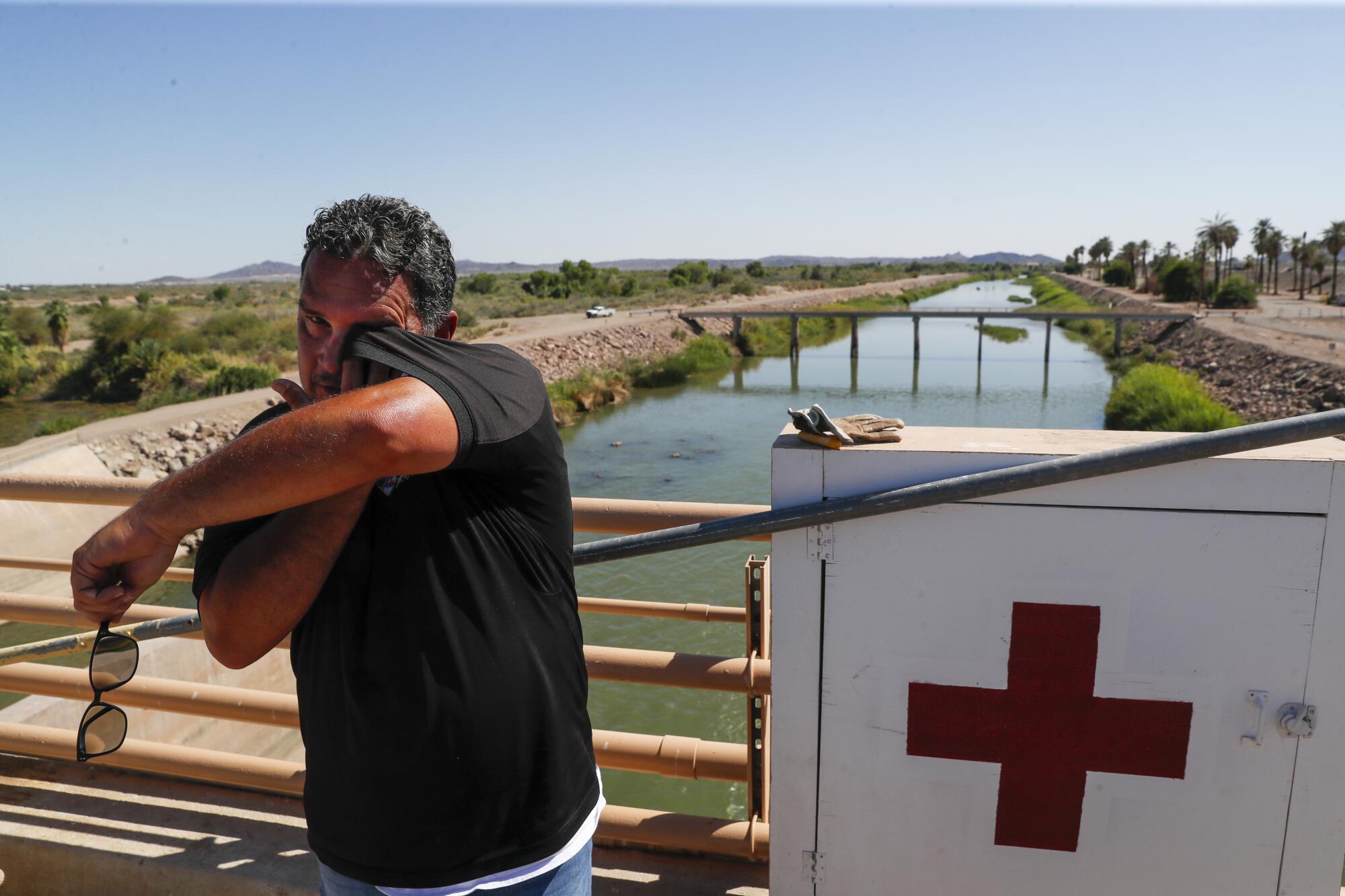
Green cattail thickets line the shallow blue pool where the river backs up against the dam, a 31-foot-high concrete wall. Three cylindrical gates, each 80 feet long and built in the 1930s, move up and down throughout the day, allowing water to pass.
Unlike Mead or Powell, Imperial Dam doesn’t provide much storage. Instead, it siphons the Colorado’s flow into the All-American Canal, delivering five times as much water to Imperial as Los Angeles uses in a year — and 10 times as much as Nevada.
But if you think Imperial is obligated to help solve California’s water and energy problems, you need to grapple with a difficult reality — that taking away even a portion of the valley’s water could have harmful ripple effects.
Those consequences were set in motion by white settlers more than a century ago.
Starting in the late 1800s, the California Development Co. staked claims to about half the Colorado River’s flow, more than 7 million acre-feet. The company began digging canals to serve the few thousand settlers willing to brave the Imperial desert.
As the region blossomed into an agricultural kingdom — and thirsty cities grew up across the West — local farmers adopted a “siege mentality,” according to Kevin Kelley, a former Imperial Irrigation District general manager. Water became “their security blanket and their shared preoccupation,” Kelley writes in a new book, published after his death in 2021.
“It is the only cause they will instinctively take up as a bloc to repel the latest external threat,” he writes. “And when they don’t have a bogeyman to fend off, it is the wellspring of all their intrigues and infighting.”
The infighting reached a fever pitch two decades ago, at the start of the megadrought still plaguing the West. Federal officials were threatening to slash Imperial’s Colorado River supply if it didn’t agree to sell large amounts of water to San Diego County. Some growers wanted to refuse, and defend their senior water rights in court. Others thought compromise was the safe bet.
The irrigation district ultimately approved the water transfer. But the wounds from that battle never fully healed. And they help explain why so many Imperial landowners react so poorly to the idea of solar farms covering up parts of their valley.
After the water transfer was approved, many farmers felt betrayed — by their friends, their relatives, their elected officials. But they assumed they had done their part to quench the thirst of coastal cities. Their remaining water was safe.
That’s not how it played out. The planet kept heating. The snowpack in the Rockies kept shrinking. The cities kept growing.
As the federal government pushes states to reduce usage of dwindling Colorado River water, Imperial Valley farmers fear a “worst-case” scenario.
And now Imperial Valley farmers are once again being warned of dire consequences if they don’t give up more water.
Many of them feel certain the same thing will happen with solar. If they allow more land to be taken out of production, L.A. and San Diego and other urban powerhouses will keep coming back for more, until their valley is a pale imitation of its former self.
“Where would I develop that trust to know that there would be an endgame somewhere?” Tagg asked.
There’s another reason Imperial’s leading citizens don’t trust their big-city counterparts: For decades, those urban power brokers have failed to live up to promises to restore the Salton Sea.
Jackeline Luna / Los Angeles Times
If Imperial Dam is the proud wellspring of the valley’s agricultural bounty, the Salton Sea is its much-abused dumping grounds.
The massive desert lake, formed in the early 1900s by flooding on the Colorado River, is sustained almost entirely by agricultural runoff — runoff infused with pesticides, salt and other pollutants, but still the lake’s only significant source of water. It flows from Imperial farm fields into 1,450 miles of drainage ditches that ultimately lead to the sparkling oasis.
Here’s the problem: With global warming and big cities prompting Imperial to use less water — and solar projects replacing farm fields — the Salton Sea is disappearing. The less water growers apply to their fields, the less water flows into the lake.
After years of cutbacks, the dried-up lake bed is like something out of dystopian science fiction. Parched polygons of cracked dirt stretch toward a thin blue water line on the horizon. A rotten-egg stench wafts from the shoreline.
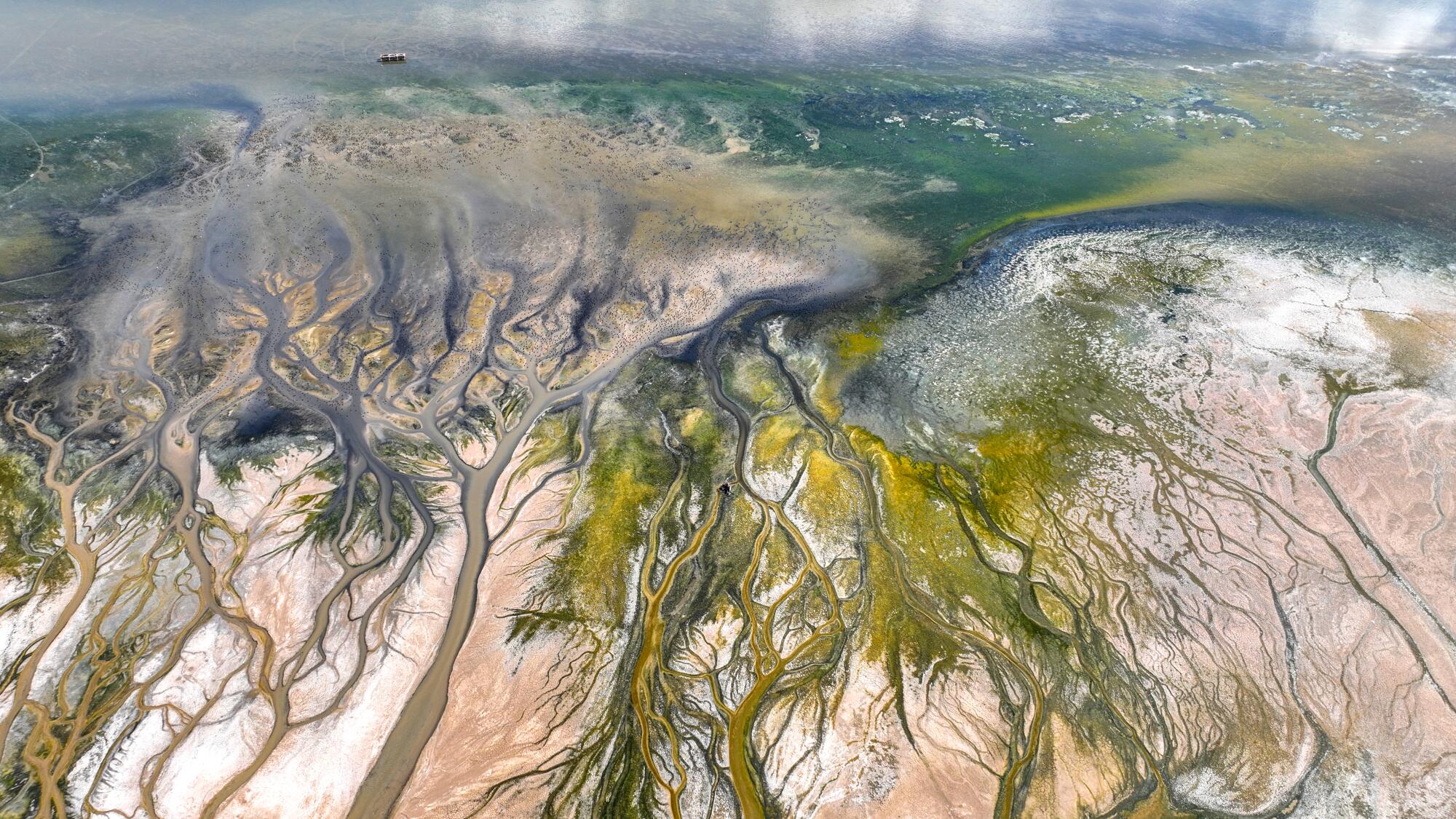
The smell isn’t the worst part. As the water retreats, intense winds bombard the dry lake bed, stirring up dust particles laced with pesticides and heavy metals. The particles blow south, further fouling the air breathed by low-income Latino communities. Imperial County children are rushed to the emergency room for asthma attacks at a higher rate than anywhere else in the state.
Wildlife is suffering too. The Salton Sea has become vital habitat for hundreds of species of migratory birds, one of the few places in the California desert where they can stop to drink and snack. Bird and fish populations are crashing.
State and federal agencies have known for decades that a public health and ecological disaster was brewing at the Salton Sea. But until recently, they’d done relatively little to stop the bleeding, despite Imperial’s increasingly desperate pleas.
Some Californians want to pump desalinated ocean water to the lake to halt its decline. The state says no.
For Imperial to use less water and produce more solar, it will need help preventing further damage to the Salton Sea as farm runoff declines. It will need state and federal officials to deliver on hundreds of millions of dollars in promised funding, and use that money to build long-delayed projects to restore habitat and suppress dust.
“We can’t be on the hook for that responsibility of saving everybody else’s hide, and taking the consequences,” says J.B. Hamby, a board member at the Imperial Irrigation District.
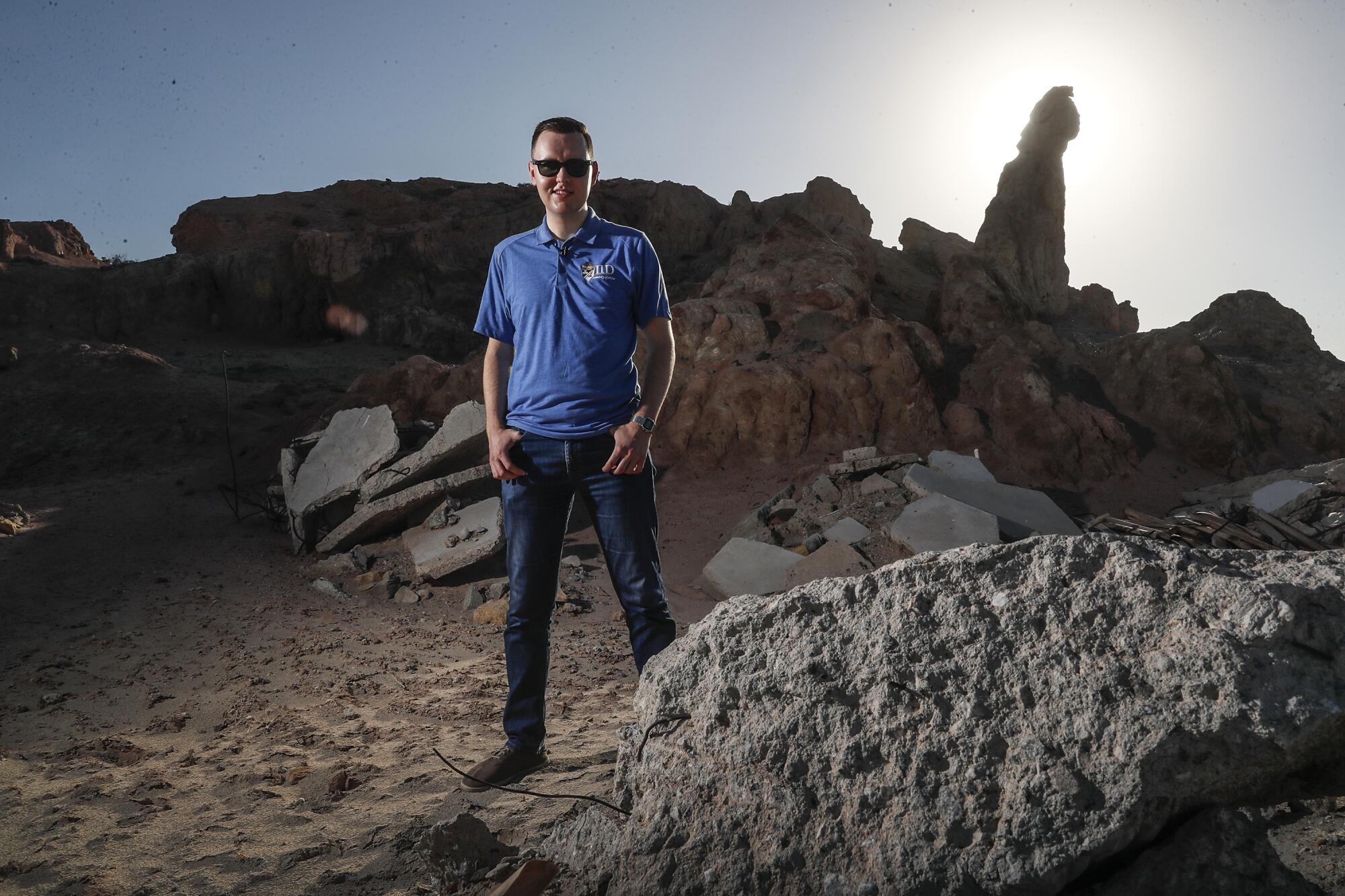
It’s in the best interest of the West’s big cities to help the Imperial Valley thrive. And it’s in the valley’s best interest to protect the Colorado River. Lake Mead is trending toward “dead pool,” the point at which water can no longer pass through Hoover Dam. If that happens, it won’t matter how senior Imperial’s water rights are. They’ll be as screwed as anyone.
“Everybody needs to do their part. That includes us,” Hamby says.
Like many farmers, Hamby doesn’t think Imperial’s part should include putting solar panels on farmland.
But if it doesn’t, the West’s climate crisis will likely get worse. Imperial Dam could become an even lonelier place.
Support our journalism
Your support helps us deliver the news that matters most. Subscribe to the Los Angeles Times.

Listening to the land
We meet up with Jack Vessey on the first morning of September, at a solar farm not far from the border. The fourth-generation grower is barely out of his car when he starts with the colorful commentary: “This is some sad s— right here.”
Vessey’s family had farmed this land since the 1950s, churning out lettuce, broccoli and cantaloupes. It was one of the family’s top-producing ranches.
But when Vessey tried to renew the lease in 2016, the owners told him they’d be handing the keys to a solar developer instead.
He was stunned. His company farms 10,000 acres, so losing this 175-acre plot was no big deal. But the loss felt personal.
“I remember coming here since I can remember, 3, 4 years old with my dad,” Vessey says. “And then it was gone.”
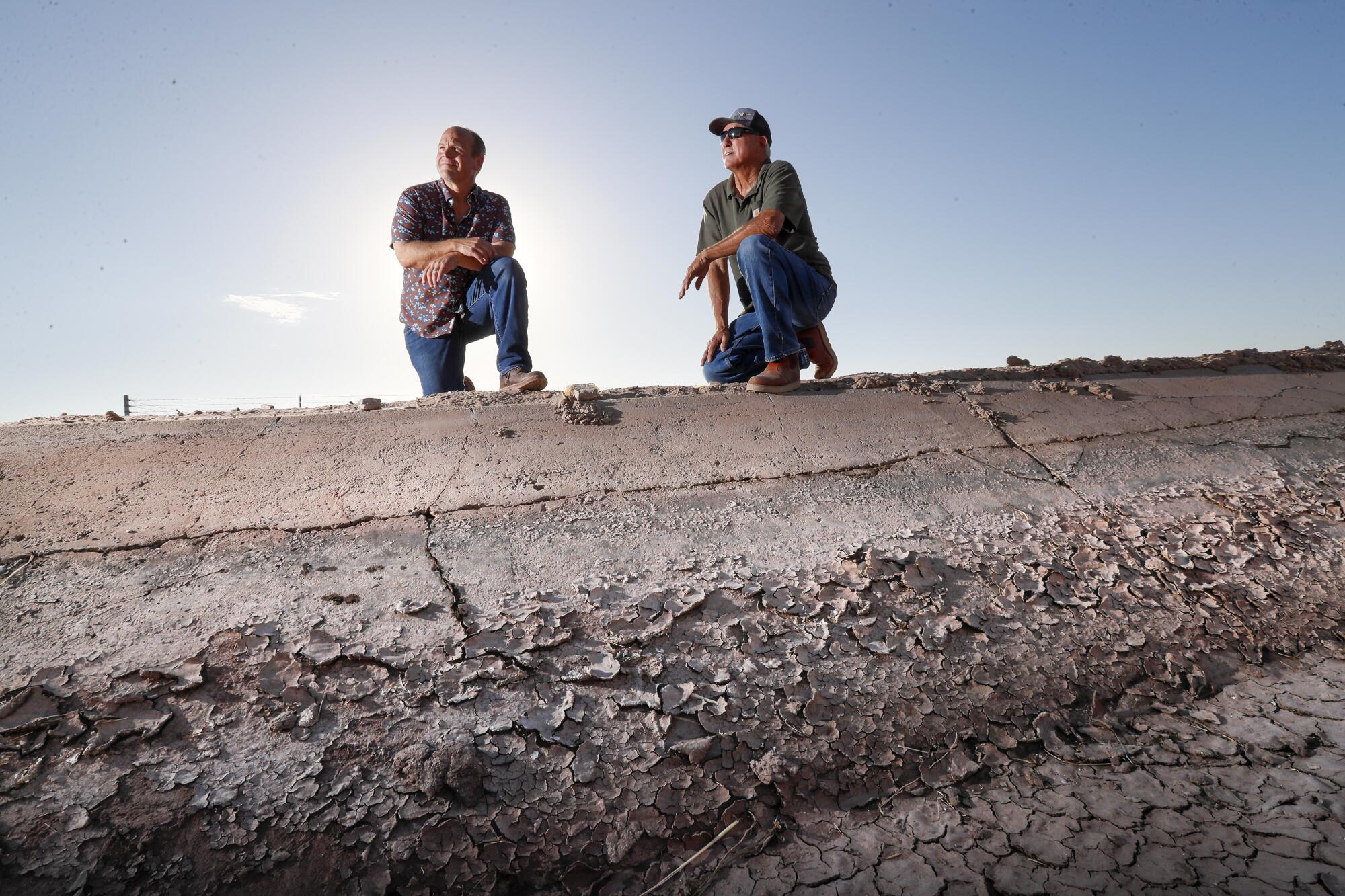
Vessey says he’s not anti-solar. He’d just like to see it built in other places.
“The American public gets more out of eating a cantaloupe than sitting here looking at a solar field,” he says.
Other growers make the same argument: There’s lots of undeveloped land in Imperial County, on either side of the irrigated valley. If faraway cities and the Biden administration want renewable energy, put it out in the desert. Don’t force it on us.
If only the choice were so simple.
Lots of solar projects have been built on undeveloped land in the West — but often over the objections of conservationists worried about harm to desert tortoises, bighorn sheep and other animals that have already seen much of their habitat destroyed. To those activists, putting solar on farmland is far superior to tearing up undisturbed wildlands.
So is that what it comes down to? We can stop climate change, but only by diminishing farming or destroying the natural world?
A recent study by the nonprofit Nature Conservancy painted a hopeful picture, finding that the West can zero out climate pollution without putting solar panels or wind turbines on the most valuable wildlife habitat — or on federally designated “prime farmland.” With careful planning, the authors concluded, damage to agriculture and the environment can be limited.
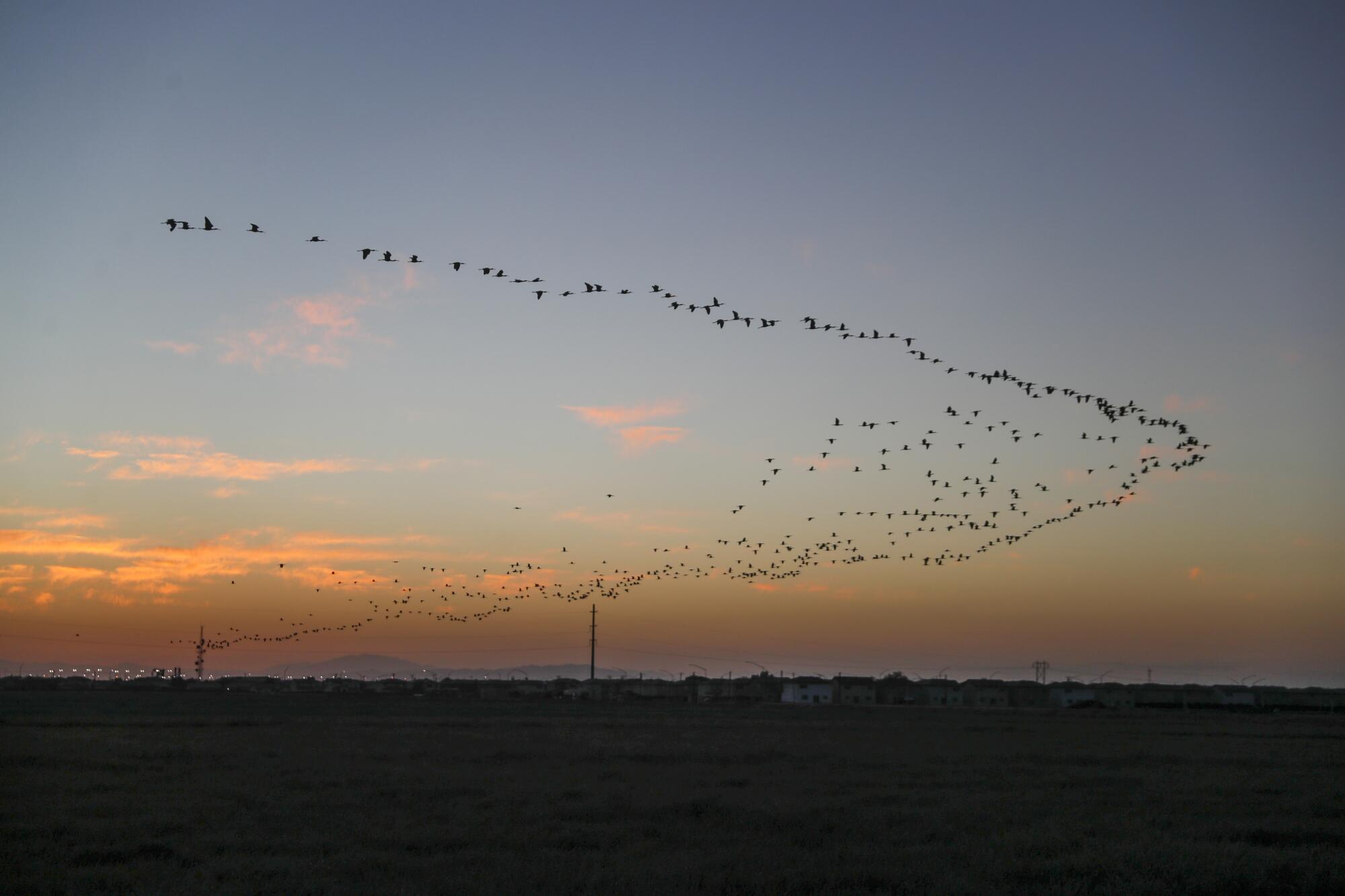
But again, it’s not so simple. Almost anywhere solar and wind energy developers try to build, they face opposition. Sometimes the critics are farmers or conservationists. Other times they’re small-town residents who love wide-open spaces, or off-roaders seeking to protect their favorite vehicle routes. Sometimes the criticism is fueled by misinformation or climate denial.
And even in a best-case scenario, huge amounts of land will be needed. The Nature Conservancy study found that phasing out fossil fuels across 11 Western states could require dedicating an area half the size of Utah to solar, wind and more.
Solar industry veteran Shannon Eddy, who runs a trade group in California, knows better than almost anyone how hard it can be to overcome local opposition and get new projects approved. Asked to discuss Imperial, she sounds weary.
“We need to have a rational conversation about where these projects go, while we’re factoring in housing, while we’re factoring in water, while we’re factoring in the need to grow food,” she says. “These aren’t easy conversations to have. Especially when we have to build so much renewable energy in such a short period of time.”
Jackeline Luna / Los Angeles Times
And especially when it’s your community being reshaped by solar or wind power. Because as much as some urbanites like to tell rural folk that clean energy is good for them — that they need the jobs, that their water is disappearing, that we’ll all boil to death if we don’t confront the climate crisis — rational conversation is tough when it feels like your way of life is at stake.
Vessey says he’s tried to convince his three kids not to follow in his footsteps, much like his own dad tried to steer him away from farming. But despite his fears for the future, he loves life on the ranch, for its challenges as much as anything.
“Every day is different,” he says, his voice full of energy. “We’re battling something every day. We’re changing crops, we’ve got bug pressures, we’ve got political pressures. It’s always a battle, it’s always a game.”
Asking farmers like Vessey to reimagine their livelihoods for the sake of a global emergency may not be fair. But the same is true for coal miners, loggers, autoworkers and many other professions. The consequences of fossil fuel combustion are so dangerous, and escalating so quickly, that scientists say we’ve got no choice.
In the West, balancing the clean energy revolution with competing demands on the land will be messy at best. Some ecosystems will be bulldozed. Some gorgeous views will be irrevocably altered. And some farmers will find themselves out of luck.
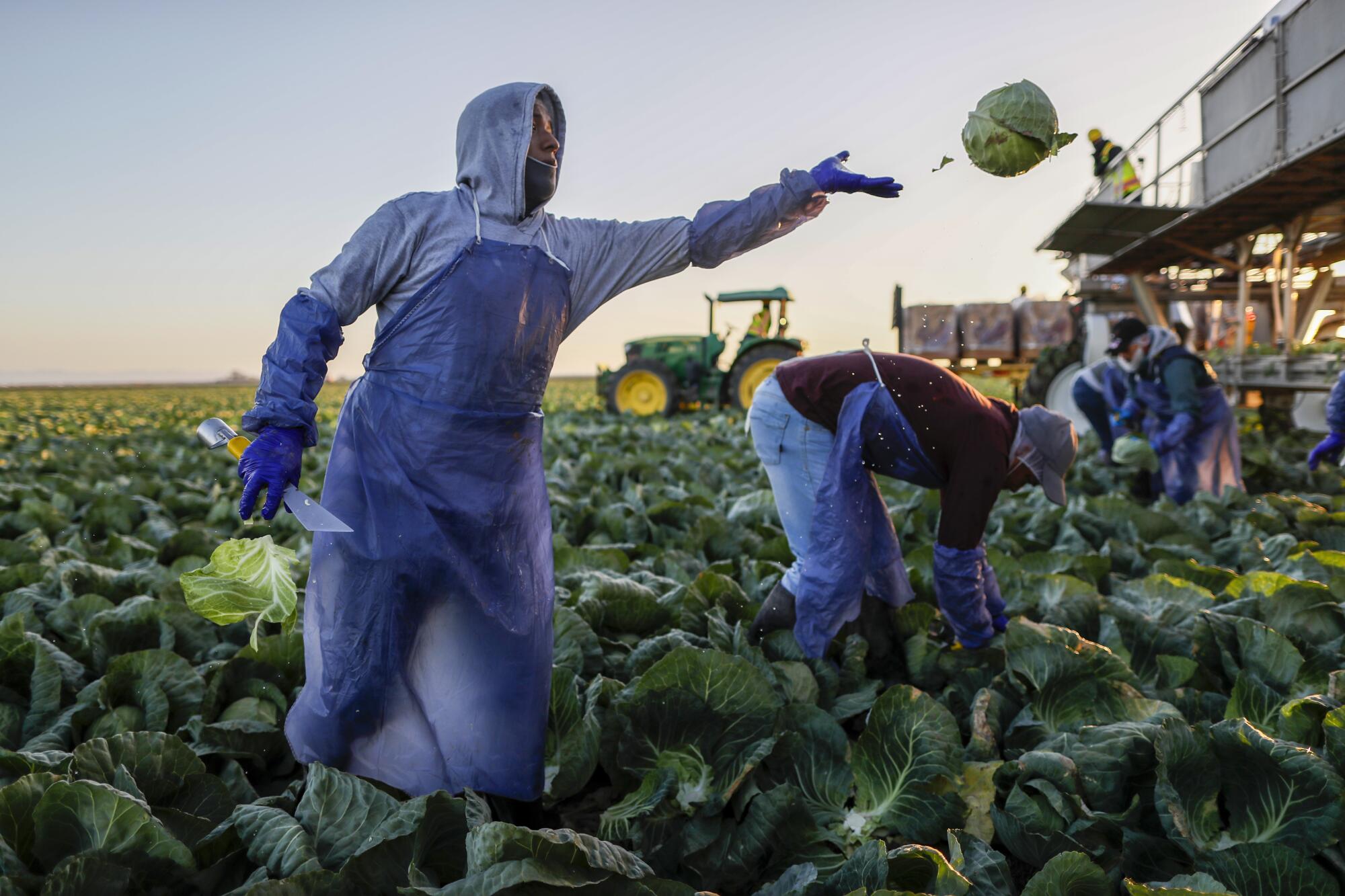
There will be more scenes like the one that played out at an Imperial County supervisors meeting in 2016, when Vessey showed up with several boxes of cantaloupes. They were some of the last crops he’d harvested from the ground he lost to solar power.
“Please, really think about what you’re doing to this ground,” he urged the board.
Will the county supervisors keep approving new solar projects on farmland, especially with Hawk replacing Castillo? It’s tough to say. But they’ll certainly have the opportunity. Enough landowners have been willing to strike solar deals that few developers have even tried building on federal lands in the desert, where the environmental review process can take years.
Even Vessey might be willing to take the renewable energy plunge, if the circumstances were right. Asked if he’d consider a good offer from a solar developer — for farmland that isn’t his best — he doesn’t hesitate to say yes.
“Business decision,” he says. “If it fits, and it’s right for us at the time, possibly. Never say never, right?”

No silver bullets
Unlike most farming regions targeted by solar or wind developers, Imperial’s got another renewable energy trick up its sleeve.
Or rather, deep beneath its surface.
Thousands of feet below the ground at the edge of the Salton Sea, salty water trapped in fractured rock formations is warmed to spectacular temperatures by heat from the Earth’s core. For decades, companies have drilled down into the reservoir, bringing up steam strong enough to turn turbines and generate geothermal electricity.
It’s climate-friendly and pollution-free — and there’s a lot more of it yet to be tapped.
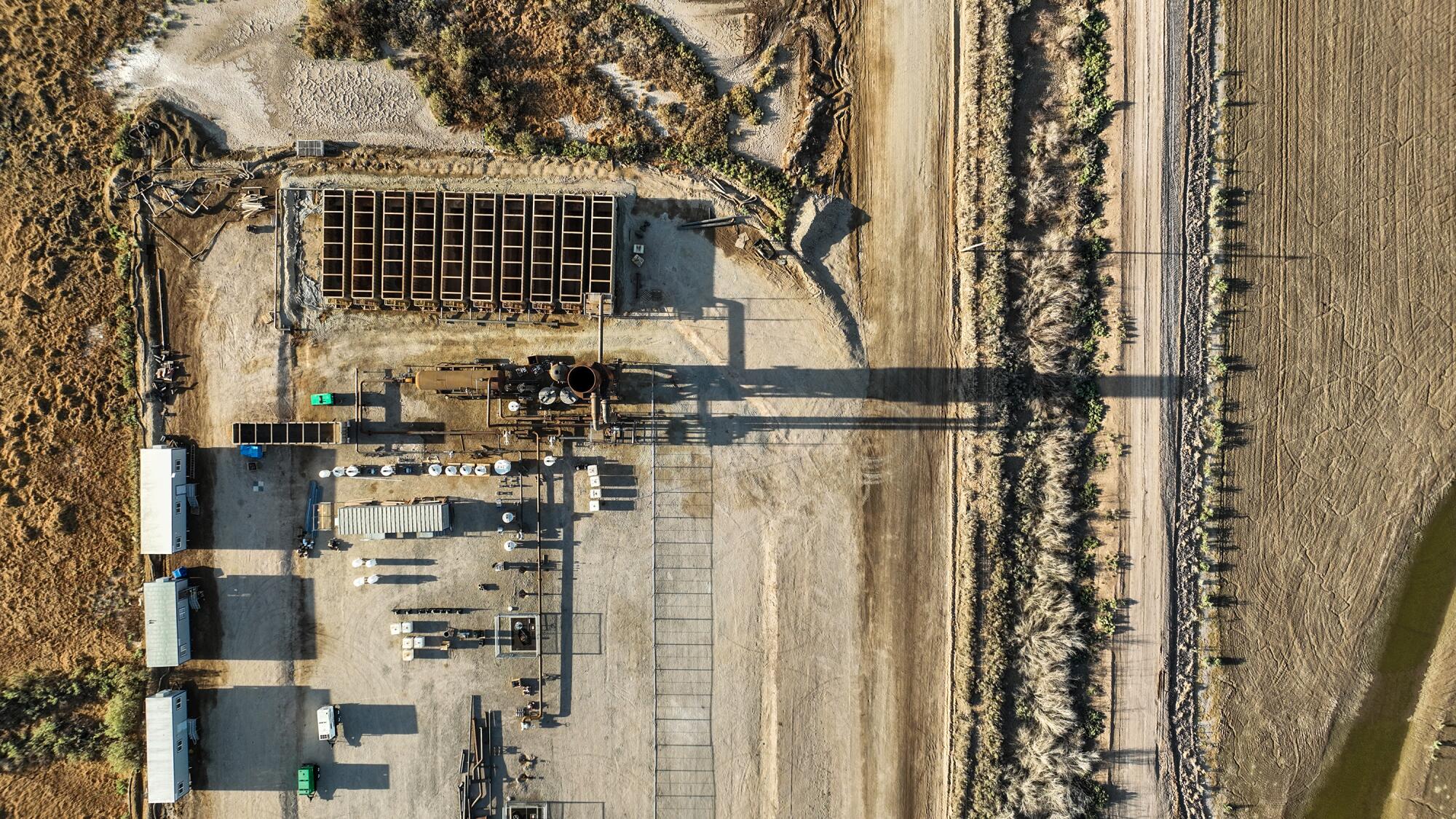
As the sun begins to set on another 110-degree day, we navigate rough dirt roads to reach a cluster of tanks, pipelines and other hulking equipment casting long shadows on the desert floor. Jim Turner is waiting for us, ready to explain why General Motors invested millions of dollars in his company.
“We had a lot of meetings with them,” he says. “They finally got comfortable that they knew what we were doing.”
What Turner’s doing is preparing to build the area’s first new geothermal plant in a decade — and also produce lithium, a key ingredient in electric vehicle batteries. The piping-hot underground fluid contains huge amounts of the valuable metal.
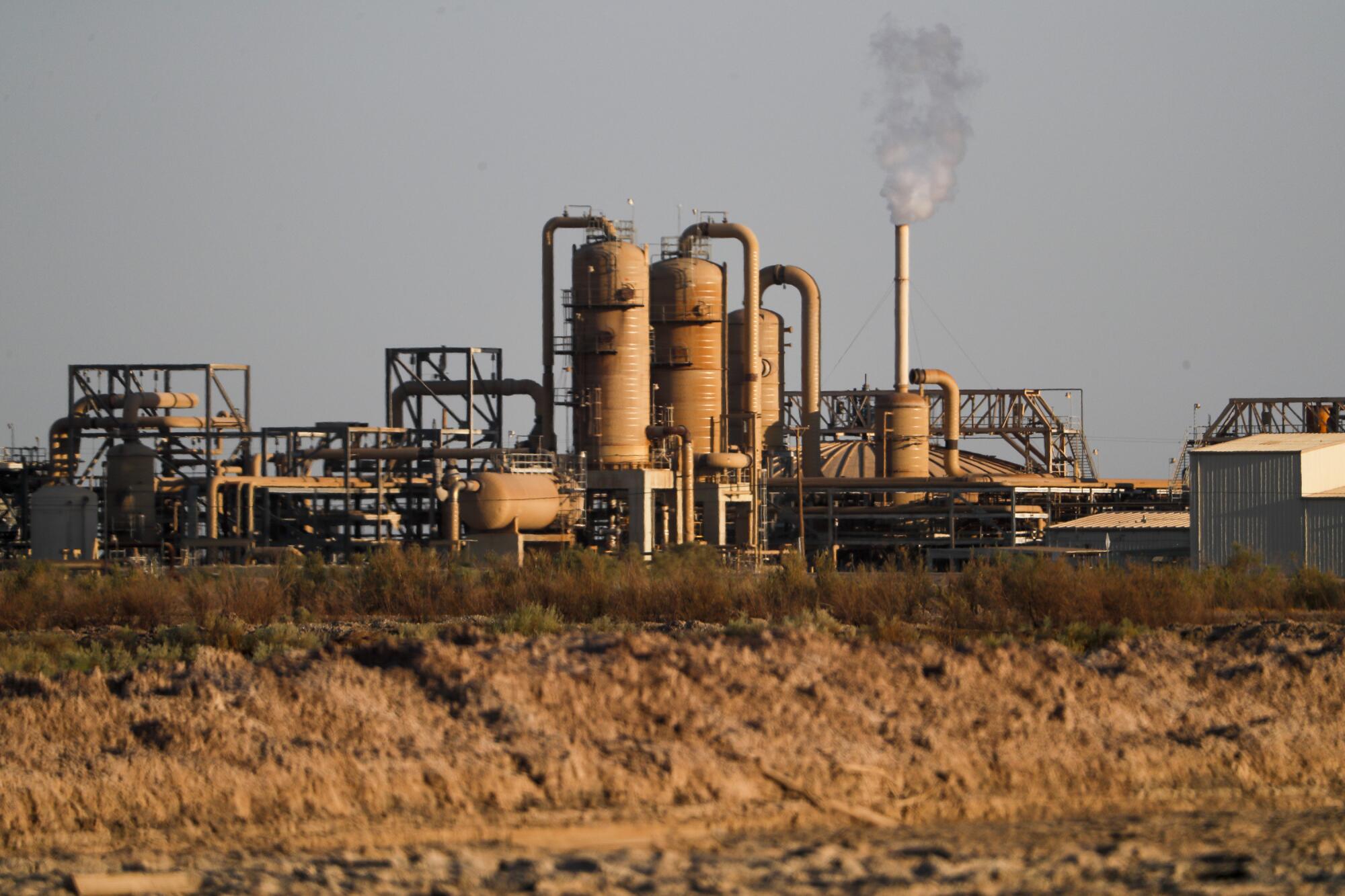
Turner’s employer, Controlled Thermal Resources, is one of several companies hurrying to build lithium plants here to supply car companies. It’s a mad dash that’s brought international attention to Imperial.
Environmental justice activists are eager to ensure that lithium and geothermal actually benefit low-income communities of color. But unlike with solar farms, there’s not much outright opposition. Local officials dream of a “Lithium Valley” economic renaissance that creates jobs and tax revenues without taking crops out of production.
General Motors is helping to fund the lithium and geothermal energy project.
It’s not yet clear whether the dream will materialize. The salty underground water corrodes equipment. Tapping it is expensive.
But Turner is optimistic. He says the wells Controlled Thermal has drilled are working better than expected.
“And in a couple of years when it’s all built, we’ll be able to actually show people,” he says.
There’s another climate benefit to geothermal power plants: They can generate electricity at all hours of the day and night. That includes sizzling evenings like the one we’re spending with Turner, who keeps wiping sweat from his brow.
“Solar’s great because it’s much less expensive, but it only works part of the day,” he says.
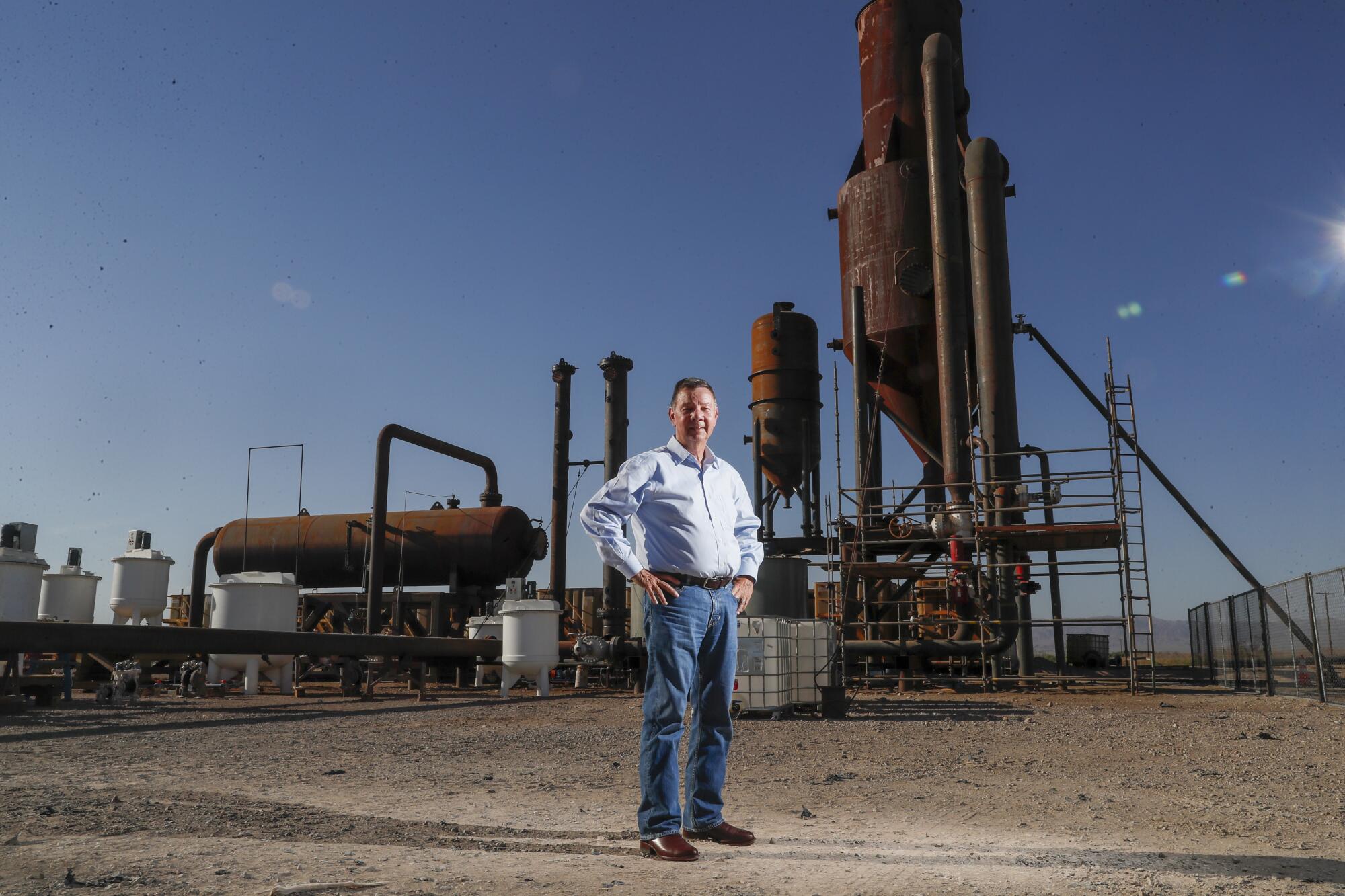
Here’s the thing about clean energy: There’s almost always a “but.”
Solar panels don’t work at night. Wind turbines kill birds. Nuclear reactors leave behind radioactive waste.
Geothermal is no silver bullet, either. Even if companies like Turner’s wring out every last bit of underground juice, in Imperial and elsewhere, it won’t provide nearly enough power to end the nation’s reliance on fossil fuels.
There are no easy answers. No solutions that come free of cost. And for Imperial, no escaping the reality that some sacrifices are inevitable on a planet being reshaped by climate calamity.
“Before it became the Imperial Valley, it was God’s Country, and that was because only God would have it,” Kelley writes.
Now everyone wants a piece of this heating, drying, dust-choked place. But for Imperial and other farm belts to supply food, water and clean energy — and help Los Angeles, San Diego and Phoenix survive the 21st century — prosperity has to flow both ways.
